√画像をダウンロード ない form of verb 249256-Nai form of verbs
The plain form of a verb, also called the dictionary form (since it is the one you will find in dictionaries) or basic form, is the informal present affirmative form of the verb The verbs we have seen so far – 食べます, 飲みます, 行きます, きます, etc – are the formal(after the te form of a verb) to not be;Do you want to become more fluent??Get my products on my Patreon page→https//wwwpatreoncom/miku_real_japaneseMy instagram https//wwwinstagramcom/mik

Nai Form Plain Present Negative Mlc Japanese Language School In Tokyo
Nai form of verbs
Nai form of verbs-In modern Japanese, instead of the conjugation 未然形 {みぜんけい} 無 {な}い, another word is used to express the plain negative, namely 無い This a process called suppletion, supplying a certain conjugational form with a different word It exists in English as wellIs not 彼 (かれ) は 只者 (ただもの) ではない。 Kare wa tadamono de wa nai
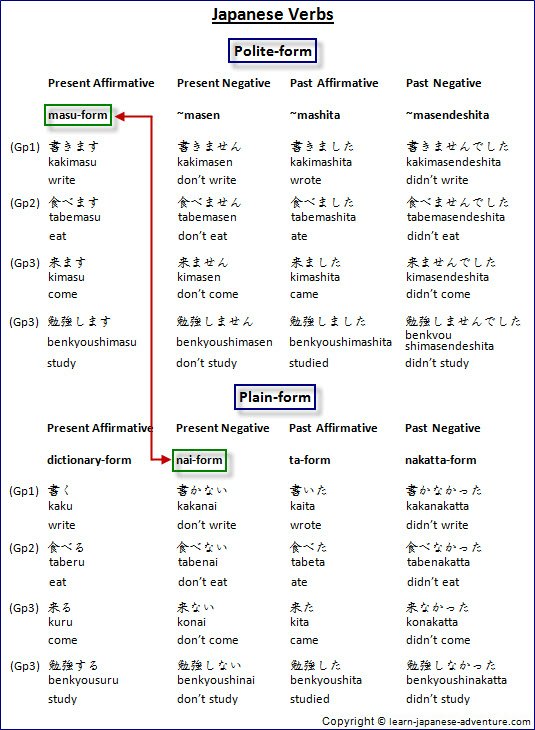


What Is The Difference Between Nai Form And Masu Form
Sep 28, 18 · Otherwise, if the preceding vowel sound is an i or e, it will generally be a ruverb We will also list the verb exceptions as part of our conjugation rule explanation The key rules for conjugating to the negative form are as follows Ruverbs require you to replace the「る」section of the verb with「ない」 Sample conjugations =This one just has a few variants, is all What the ない form is is PLAIN, PRESENT, NEGATIVE For an English example, "not" would work There's a few steps to take to properly conjugate ない form verbs 1) Determine which category the v erb falls intoMinna no Nihongo grammar lesson 46 we will learn more new meanings of と こ ろ and important grammar points attached 1 ところです ところ means root, is the location, in addition to indicating time In this lesson we will learn the second meaning This sentence is used to indicate and
Nai form of the verb is also one of the commonly used form of any verb It is conjugated like this 1st group In the case of verbs having an い sound, the masu and the い sound is changed into the あ sound, and ない is joinedExamples are のみます→のまない, いきます→いかない, すみます→すまないJan 22, 17 · Some are るverbs and conjugate differently – ex おきます (to wake) to おきる るverbs Take the stem form of the verb and and as ない to the end Ex 1) みます to みない Ex 2) たべます to たべない Using ないform verbs One of many ways to use the ないform of a verb is to ask someone to not do somethingFeb 11, 21 · Alternative forms (informal) じゃない (ja nai) Etymology (This etymology is missing or incomplete Please add to it, or discuss it at the Etymology scriptorium) Verb ではない • negative of だ and である;
121 verbs (for JLPT N5) グループ 1 ~きます Present Positive Dictionary form Present Negative ないform Past Positive たform Past Negative なかったform 1 あきます open (vi something opens) あく あかない あいた あかなかった 2 あるきます walk あるく あるかない あるいた あるかなSome verbs follow rules that are regular (in terms of the overall language), but relatively unusual or special While not irregular per se, they present many of the same difficulties Irrealis form of u verbs Verbs ending in う u have the unusual irrealis ending wa, as in 買わない kawanai, from 買For uverbs that end in 「う」 Replace 「う」 with 「わ」 and attach 「ない」 Example 買う わ ない = 買わない



N4 Grammar させる Saseru To Make Allow To Do Learn Japanese Jlpt Sensei



What Is The Difference Between Nai Form And Masu Form
4 Tai (たい) form – past, negative and past negative 5 Tai (たい) form sentence examples 6 たい and its usage "want to (do)" 7 たくない and its usage "don't/doesn't want to (do)" 8 Past tenses 9 Nope, they aren't the same "たい" versus "ほしい" 10 Summary 11 Japanese Verb aru 〜たがるAug 31, 18 · Steps to Change Group 1 Verbs Into the Negative Form 1 Replace the suffix from the 3rd row (う – row) with the suffix from the 1st row of the hiragana chart (あrow) Example 飲む (no mu ) —> 飲ま (no ma) 2 Add "ない (nai)" to the end "ないLearnjapanesebod 「Learn Japanese」 ないForm VERB 方がいい as "should not do VERB/it's best to not do VERB" This grammar pattern, which is the negative version of the たForm VERB 方がいい (X should do VERB) construction, is used to express a suggestion against a



Cheat Sheet On ない Form Passive Form Causative Form Learn Japanese In Sg With Tls



Japanese Verb Continuous Form ている
Feb 17, · How do I form the(ない) negative form in Japanese?Naiform is a negative short form Long form > Short form374 たいforms (たん語 611D Ch2) 9 ばforms (conditonal) 240 てforms(たん語 601D ch3) 276 てforms(たん語 610D ch4)
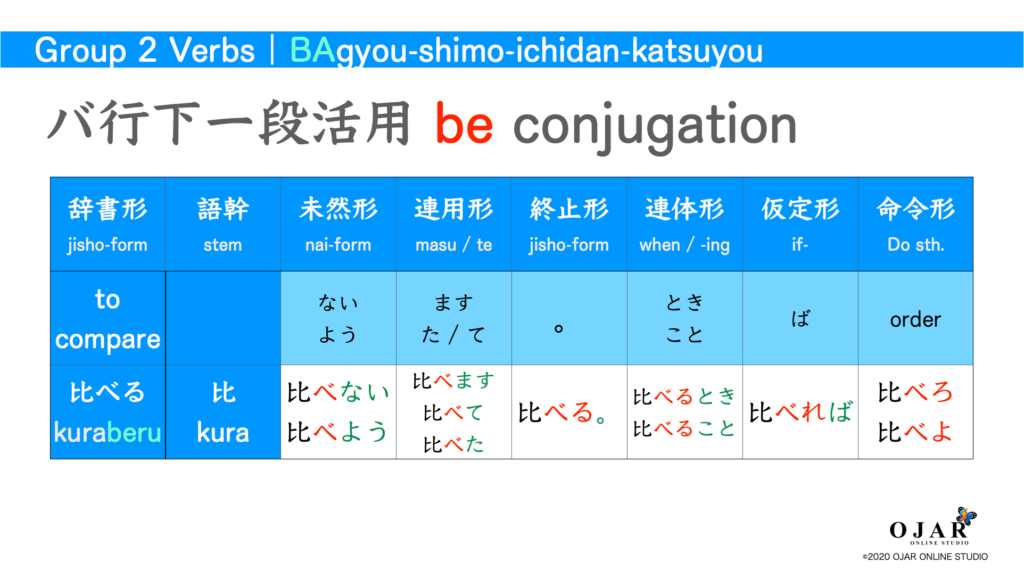


Japanese Lesson 17 Verb Conjugation Group 2 Ojar Online Studio
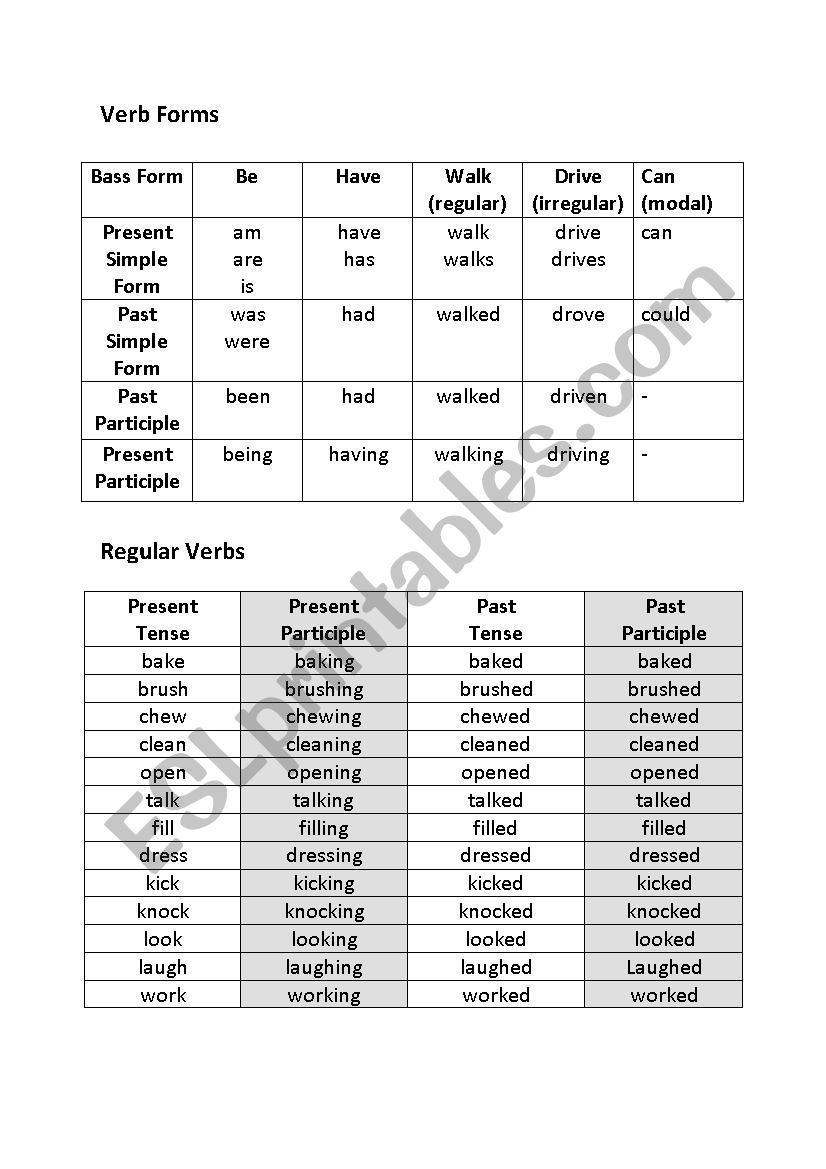


Verb Forms Lists And Gap Fill Exercise Esl Worksheet By Wheelywood
Change Verb ます form into Verb ない form Learn with flashcards, games, and more — for freeLearn Japanese – The Complete Video Series (presented by becauseofdreams) 318 Lessons 1 「Learn Japanese」 Intro to Japanese The Hiragana Syllabary, Vowels, Pitch Accents, and More 2 「Learn Japanese」 The Katakana Syllabary 3 「Learn Japanese」 First Person Pronouns, or, Ways to Say "I" in Japanese 4When it comes to creating the negative form the first thing you need to do is establish the verb groups, see the charts below Group 1 IRU/ERU Verbs – Verbs that end in IRU いるand ERUえる



N5 Grammar ないでください Naide Kudasai Learn Japanese Jlpt Sensei



Nai Form Plain Present Negative Mlc Japanese Language School In Tokyo
The volitional form of Group 2 is made by adding よう to the stem The potential verb belongs to Group 2 and it has the masu form and the plain form The negative of the conditional form is なければ which is made from the nai form The negative of the imperative form is made by adding な to the root formTo get the present negative, switch the last hiragana character for it's あ equivalent and add ない One exception to this rule when the verb ends with う the う changes to わ Together with ない you end up with わない So with the earlier verbs you getJLPT Grammar N5 – Verbs and basics Dictionary form & ない form In Japanese verbs are divided into 3 groups Group 1 Tail verbs – う (u) Include verbs ending with う (accounting for 70% of verbs in Japanese)



Smile Nihongo Academy Here Is The Summary Of Converting Japanese Verbs Plain Form Into Negative Form ない Form Take A Look At The Example Of はなす Speak Below Masu From



Learn Jlpt N4 Grammar しか ない Shika Nai Japanesetest4you Com
「Learn Japanese」 Howto say "Go/come/return to do VERB" with Preます Form VERB に (行く/来る/帰る) 16 「Learn Japanese」 Negative ない Form (Verb Conjugation)Read Verbs ない Form from the story Learn Japanese by magicalcrescent (🌼) with 1,407 reads language, japan, japaneseSep 25, 05 · Take the verb in its plain, negative form The result will be verbstem ない (nai) If the last character of the verbstem (ignoring the "ない ") rhymes with あ (a), then it's a godan verb;
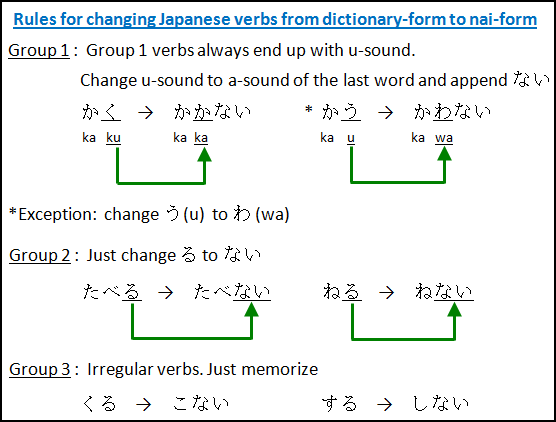


Japanese Verbs Part 2 Free Japanese Lessons



Japanese Study Materials ばの形 ば Conditional Form Theresa Steele
Mar 16, 19 · 会う・あう (to meet) → 合わない・あわない (to meet) 買う・かう (to buy) → 買わない・かわない (to buy) Of course, we also have irregular verbs する (to do) → しない (not do) 来る・くる (to come) → 来ない・こない (not come) And if you want to say "I have to do ", all you have to do is to change the ない into なきゃ So Not eat = 食 た べないThe two grammars are formed by using ないform (naiform) Although the grammar Verb (ないform ない) なければいけません is in negative form (~ません), its meaning~ないかな (Negative Verb Form with Positive Translation) Ask Question Asked 3 years, 9 months ago Active 3 years, 9 months ago Viewed 2k times 8 1 I encountered the following as I was reading chapter 29 of the manga かぐや様は



Can You Add です After A Plain Form Of A Verb Japanese Language Stack Exchange



How To Make Verb Nai Form 日本語の文法 文法 学習
Meguro Language Center BP6 (2101) 1/4 113のどうし (113 verbs) Group 1 (70%) Group 2 (30%) Irregular (2 words) ますform ~ます u a ない たたform a なかった しなかった225 ないforms (verbs negative) 444 #444 ないforms (verbs, adjectives, and nouns negative) 238 たいforms;Nov 28, 06 · Follow the "Negative ~ます form to ~ない form" rules to obtain the verb in its ~ない form However, instead of deleting "ません" like it says, delete "ませんでした" Next, after obtaining the ~ない form, which is 書かない in this case, drop the "い" from the ~な ending and add "かった" to obtain the PpN form verb


Japanese Casual Negative ない Verb Conjugation



Learn Jlpt N4 Grammar ないで Naide Japanesetest4you Com
In Japanese, the basic verb form is an imperfective aspect It is broadly equivalent to the present and future tenses of English, and is sometimes called the "nonpast tense" The imperfective form of a verb is the same as its dictionary form—it is used as the headword, or lemma—and no conjugation needs to be done For example, using theJapanese verb groups RuVerbs / V2 Ru verbs or V2 verbs end in any kana in the い (i)/え (e) column る (ru) This is why sometimes ruverbs are also known as iruverbs and eruverbs Because the base of the verb stays the same when it's conjugated, these verbs are called 一段動詞 (いちだんどうし/ "oneform verb")Rhymes with い (i) or え (e), then it's an ichidan verb



ない Forms Short Negative Forms Of Japanese Verbs Youtube



Jlpt N3 Grammar You Need To Know How To Use ないで ず And ないうちに Kawa Kawa Learning Studio
Mar 27, · My Minna textbook says that てform verb or (ないform ないで) verb indicates that the action or state of the preceding verbals accompany the verbs The example sentences given to illustrate the construction are straightforward Later on I encountered the following exercise sentencesA quick review of casual vs polite speech Negative verbs naturally include ない when they're in the plain form We can use the Negative polite form as well, in which case we use ません (masen) to negate the verb stem As you may recall from our beginner section, nouns and adjectives are negated with ない (nai) and ありません (arimasen)May 24, 19 · Nai form of a verb Like the other grammatical rules, the process of making a nai form has exceptions For them, we need to conisder irregular steps In this section, however, I will focus on a basic uverb which ends with the "u" vowel in its plain form "Iku" is it Let me explain how to make its nai form step by step
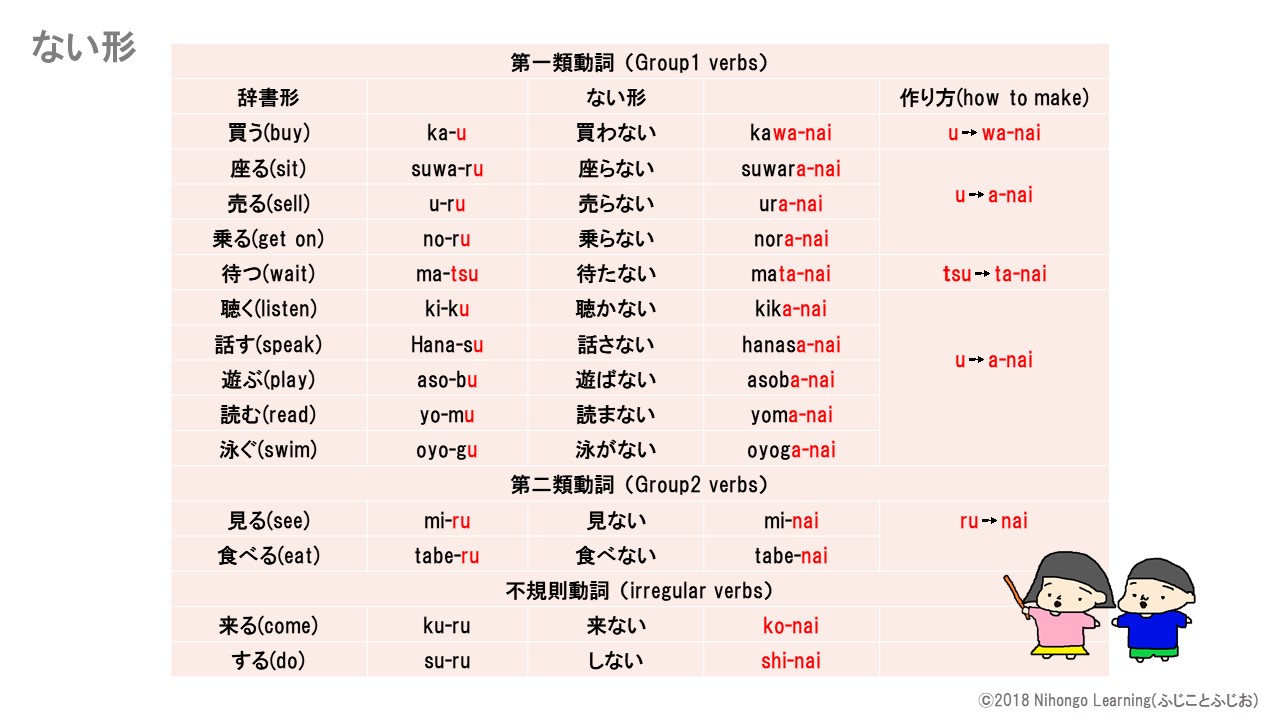


辞書形 ない形 Dictionary Form Nai Form Japanese Verb Conjugation List Lesson On Youtube 11 Nihongo Learning ふじことふじお Fujiko Fujio
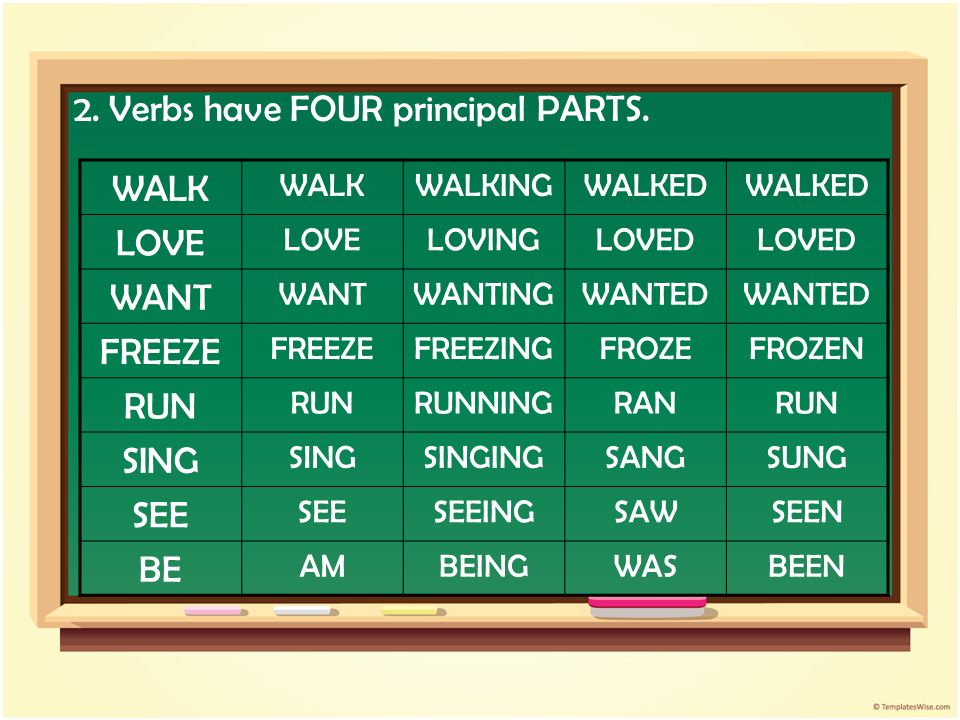


Verb Forms Guided Notes Ppt Video Online Download
To form the Negativeない Form for うverbs, drop the fina 「Learn Japanese」 Verb Conjugation Negative ない FormThe ない Form is the casual form of negative speechJapanese Grammar – te wa ikemasen (てはいけません) てはいけません (te wa ikemasen) is a way to say "you can't do that" This Japanese grammar function should always come after the teform of the "forbidden" verb Let's start by breaking down the polite and casual forms Polite Form (teform verb) てはいけVerb ないform (Plain NonPast Negative) STUDY Flashcards Learn Write Spell Test PLAY Match Gravity Created by nasusensei TEACHER Change ますform into ないform



Learn Japanese Verb Conjugation The Casual Negative Form Nai ない形 Youtube
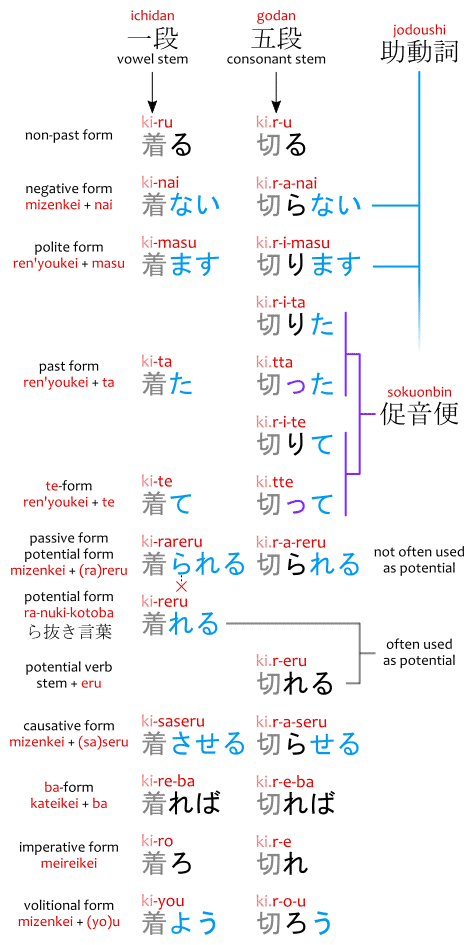


Ichidan Vs Godan Verbs Japanese With Anime
思うようにNegativeないForm VERB as "does not VERB as desired" (Learn Japanese) By Ruben Vanhees on Category Comments 0 Author Ruben Vanhees Other posts by Ruben Vanhees Previous post Xに従って(従い) as "following X, in accordance with X" (Learn Japanese)Negative Verbs with 「ないです」 For verbs, we learned the four conjugations for the polite 「~ます」 form as shown by the example below For the two negative forms highlighted in the table, instead of using the 「~ます」 form, we can instead append 「です」 to the plain negative forms similar to nounsNegative form for verbs For ruverbs Drop the 「る」 and attach 「ない」 Example 食べる ない = 食べない;
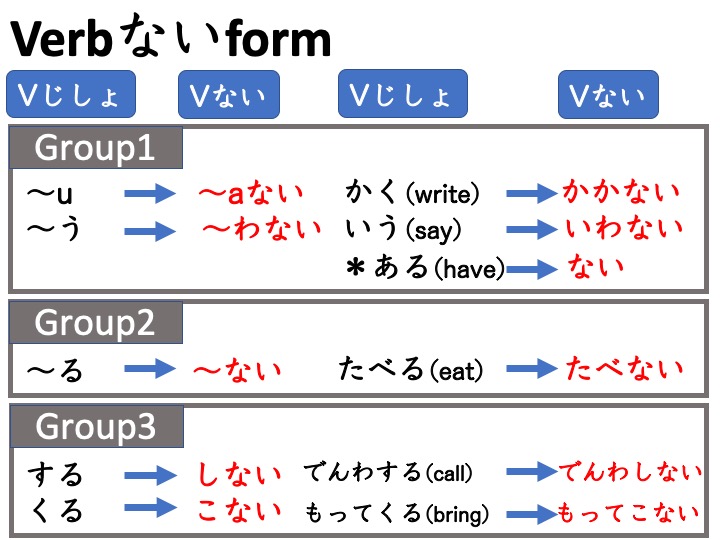


Lesson 77 Verb ないform Nai Form Japanese Language Note



The Japanese Tai たい Form Expressing What You Want And Don T Want
Dec 28, 11 · JAPANESE VERBS ない形 「動詞」 ないform Verb Groups Group 1 Verb ますform Verb ないます ないform のみます のまない とびます とばない まちます またないGroup 3 verbs are irregular verbs You just need to memorize them The naiform of くる (kuru) is こない (konai) and the naiform of する (suru) is しない (shinai) In summary, the following diagram shows the rules when changing dictionaryform to naiform for Japanese verbsApr 13, 11 · Changing verbs to ないform Function of the naiform (ない形, or 'nai kei') The primary purpose of the naiform denotes the negative meaning of that action 'Nai' is also the plain form for 'masen' In this lesson, I will share about the methods to change verbs in ます (masu) form into ない (nai) form for the following type of verbs Type I Verb;



Can You Add です After A Plain Form Of A Verb Japanese Language Stack Exchange
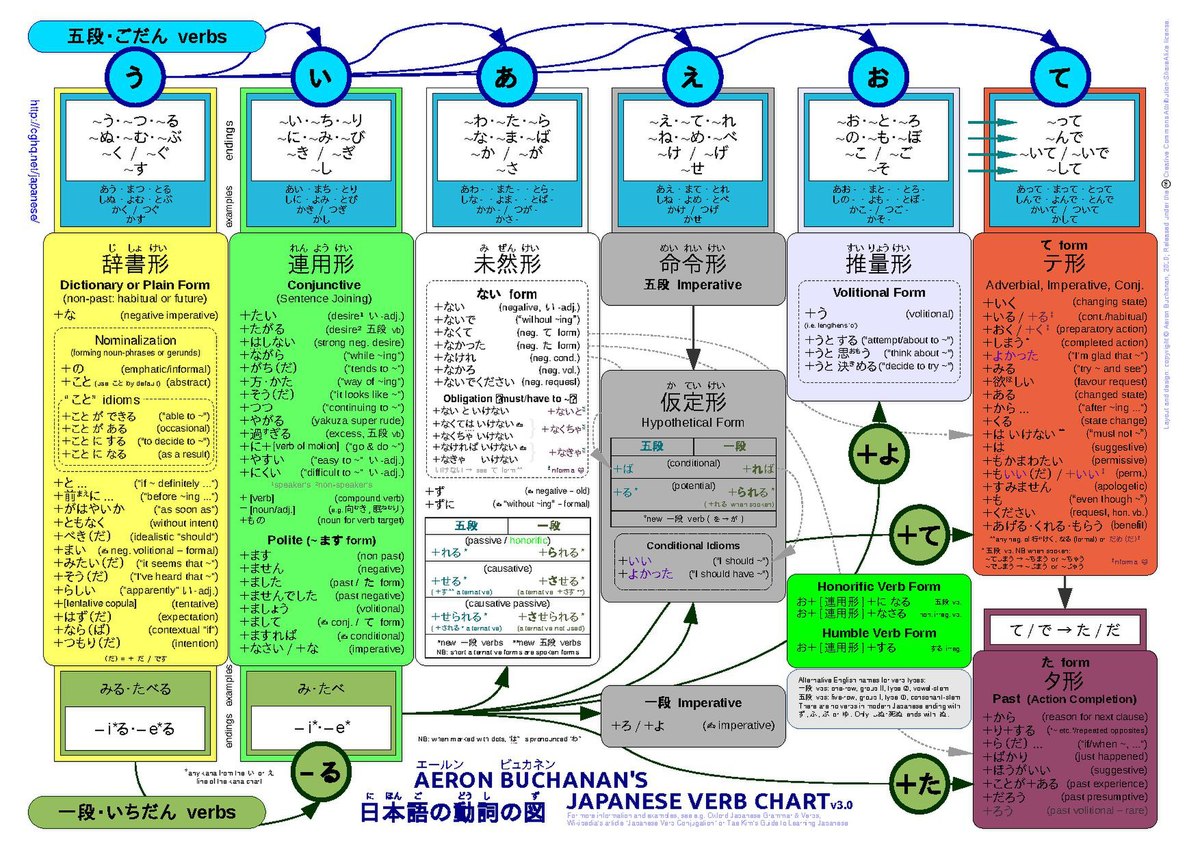


Japanese Verb Conjugation Wikipedia
You bet there's another convoluted form out here to learn!


Plain Form Of Japanese Verbs
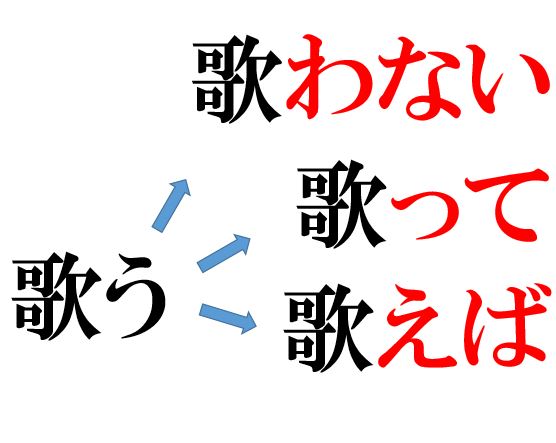


Japanese Verb Conjugation Table



U Verb ー Verb Conjugation List With Illustrations Part 1



Nihongo Verb Nai Form Conjugation Nihongoph



Godan Verbs Japanese With Anime



Doc Positive Negative Present Past Present Past Verb Diction Form Chia Hui Yi Academia Edu
/verb-conjugation-01-591090763df78c9283ebb328.png)


Japanese Verb Conjugations Group One


Plain Verbs Japanese Teaching Ideas



Japanese For Beginners Kamoshirenai かもしれない



Japanese For Beginners Ni Chigai Nai にちがいない



4 16 金曜日 Verb Short Form Negative と いけない Must Flashcards Quizlet
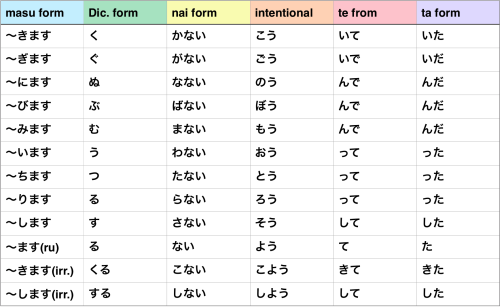


Te Form Chart Danada



How To Use The Japanese Past Negative Verb Form なかった For Was Not



Japanese Verb Conjugation Rules An Ultra Guide
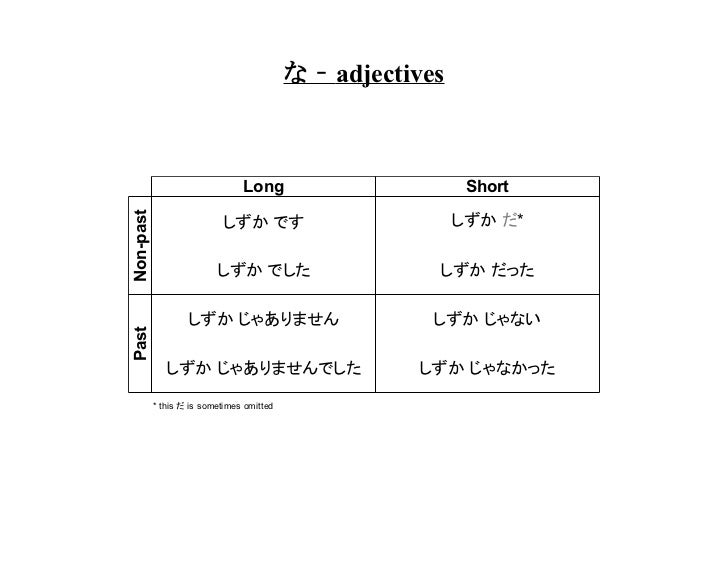


Conjugations Of Japanese Copula Verbs Adjectives Short Forms



Introduction To Japanese Plain Form Verbs



Japanese Grammar Negative Plain Form Of Verbs Punipunijapan



Learn Jlpt N4 Grammar なくてもいい Nakute Mo Ii Japanesetest4you Com



Nihongo Verb Nai Form Conjugation Nihongoph
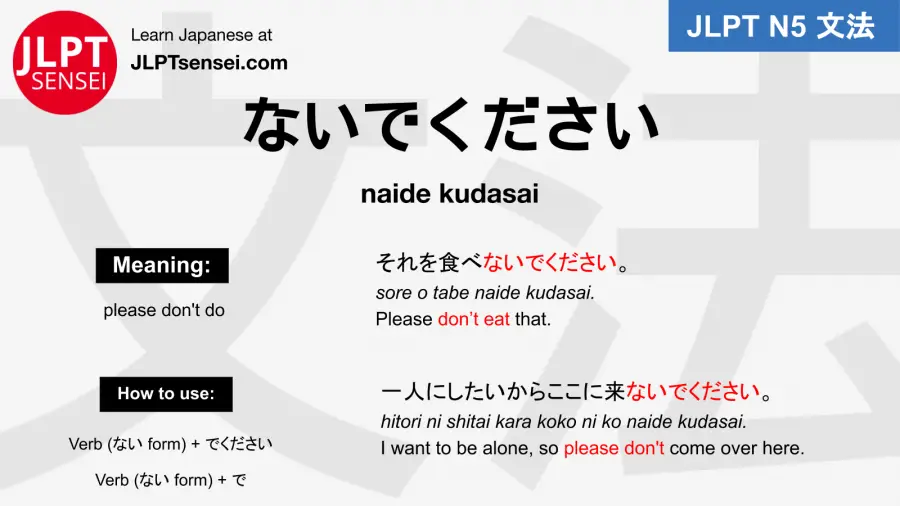


N5 Grammar ないでください Naide Kudasai Learn Japanese Jlpt Sensei



Japanese Grammar Negative Plain Form Of Verbs Punipunijapan



Verb Nai Form Conjugation Group 2 In Japanese Nihongoph



Jp Verb Ending A Sentence With ます P Library



Negative Short Forms ない Form



Nai Form Plain Present Negative Mlc Japanese Language School In Tokyo



How To Use Plain Form Of Japanese Verbs Present Future And Negative Present Future



A Verb Passive Form Again A Passive Form



こと Koto Japanese Words Japanese Language Lessons Japanese Language



Japanese Verbs Nai Form By Hendra Bi Issuu
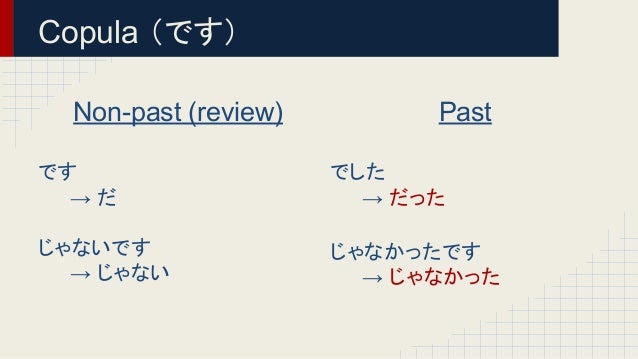


Past Tense Short Forms Of Japanese Verbs And Adjectives



Japanese Verb Chart Page 1 Line 17qq Com



Learn Jlpt N3 Grammar うちに Uchi Ni Japanesetest4you Com



Genki L8 ない Form Plain Negative Nai Form In Japanese Youtube
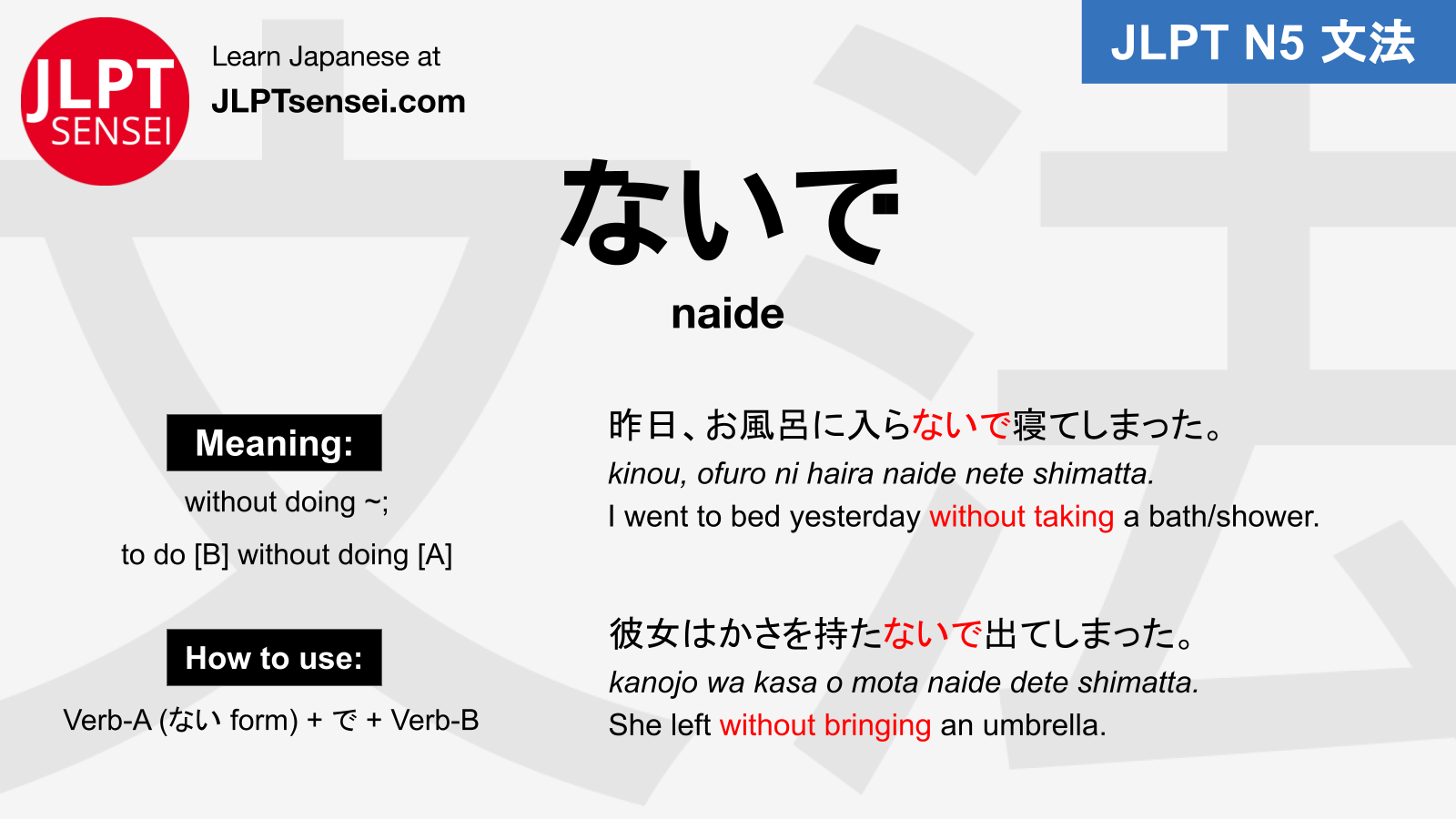


Jlpt N5 Grammar ないで Naide Meaning Jlptsensei Com



How To Use The Japanese Past Negative Verb Form なかった For Was Not



Jlpt N3 Grammar You Need To Know How To Use ないで ず And ないうちに Kawa Kawa Learning Studio



What Is Nai Form Of Verbs And How To Conjugate Them ない Form Japanese School Amino



Verb Forms After Verb Be Download Table
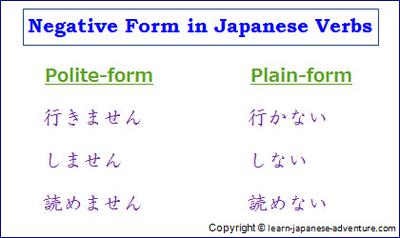


In Learning The Japanese Language What Does Negative Form Mean



少しも ない Sukoshi Mo Nai Japanese Quizzes


Negatives Japanese Teaching Ideas



A Verb Passive Form Again A Passive Form



Please Do Not Verb Verb ないform でください 日本語まとめサイト
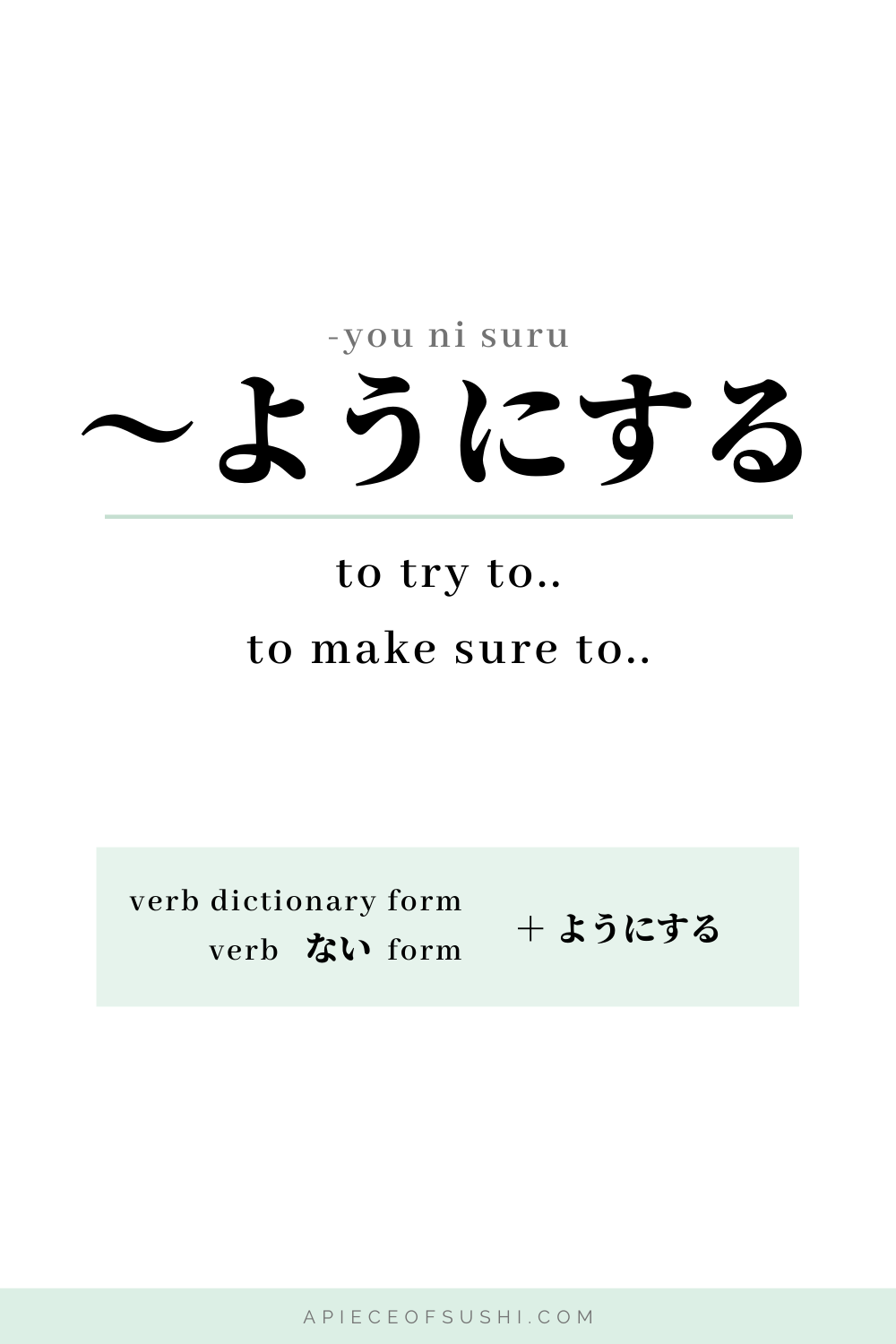


Jlpt N4 Grammar 文法 You Ni Suru ようにする To Try To To Make Sure To A Piece Of Sushi
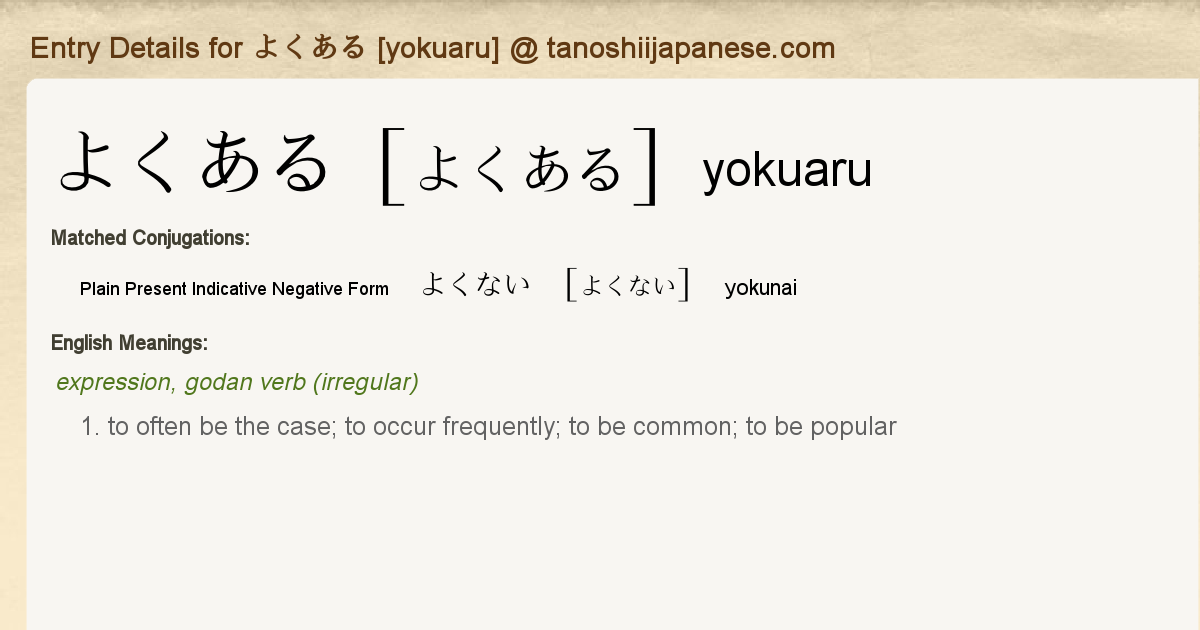


Entry Details For よくない Yokunai Tanoshii Japanese



How To Conjugate Plain Form Japanese Verbs Into The Negative And Past Negative Forms



辞書形 ない形 Dictionary Form Nai Form Japanese Verb Conjugation List Lesson On Youtube 11 Nihongo Learning ふじことふじお Fujiko Fujio



Japanese Verb ないform 動詞のない形 Youtube
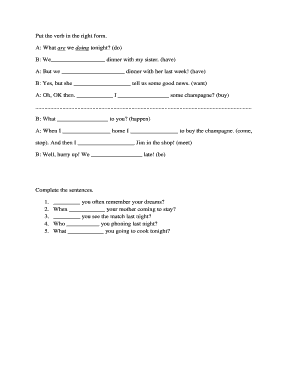


Put The Verb In The Right Form What Are We Doing Tonight Fill Online Printable Fillable Blank Pdffiller



Jlpt N5 Lesson 16 Grammar Verb Part 04


Grammar Summary
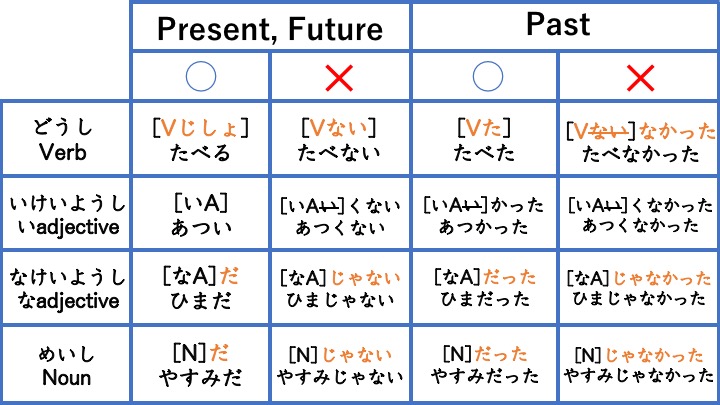


Lesson 90 ふつうけい Plain Form Japanese Language Note
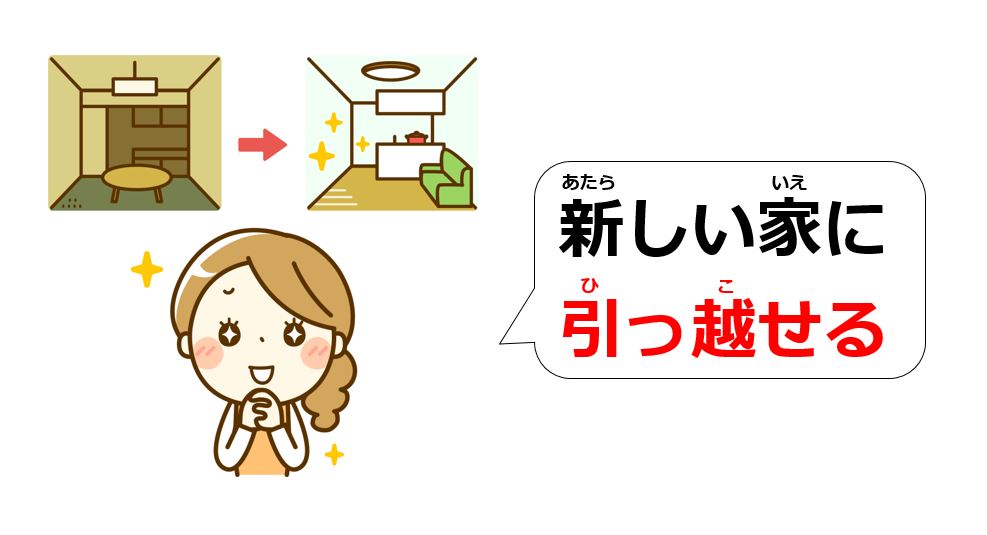


Japanese Potential Form ら れる And ことができる



Japanese Irregular Verbs Wikipedia


Japanese Verb Conjugation In Short Form Akatsuki Note



わけがない Wake Ga Nai Jlpt N3 Grammar List



Negative And Positive Verbs In Japanese
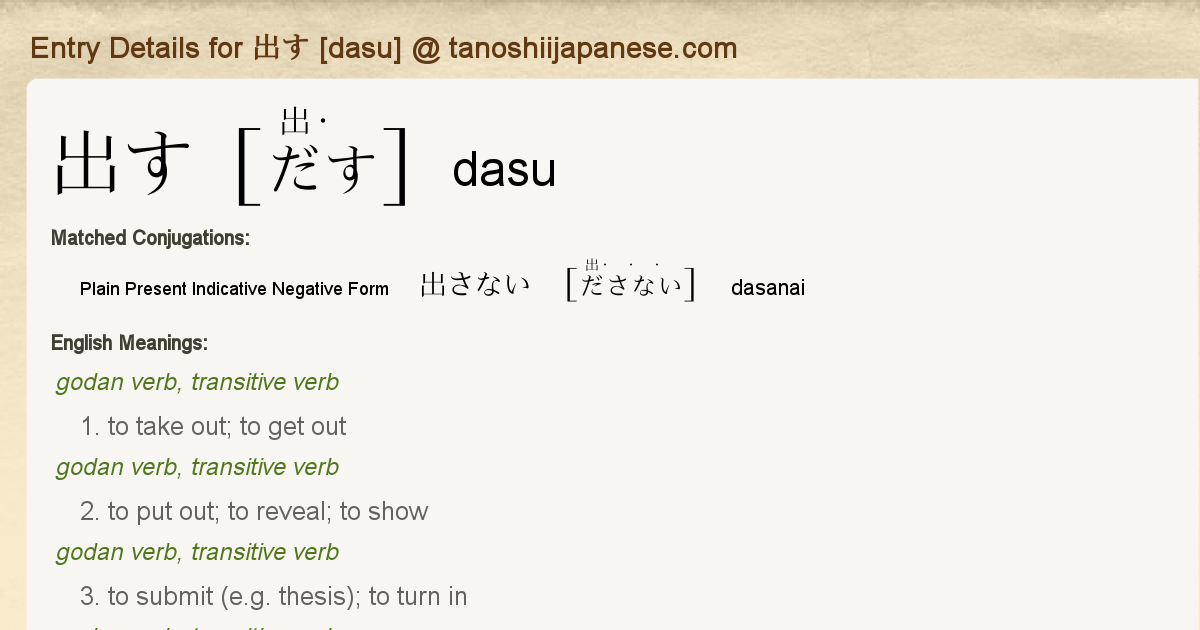


Entry Details For 出さない Dasanai Tanoshii Japanese



辞書形 ない形 Dictionary Form Nai Form Japanese Verb Conjugation List Lesson On Youtube 11 Nihongo Learning ふじことふじお Fujiko Fujio
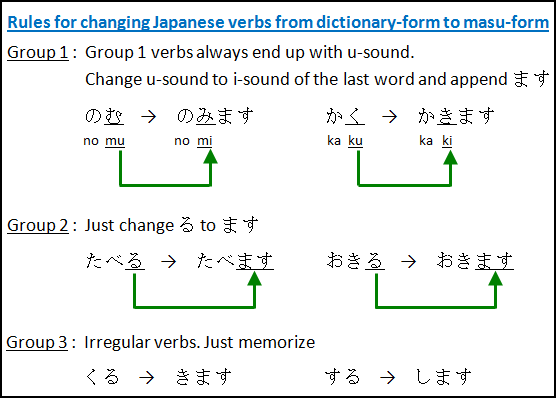


Japanese Verbs Part 2 Free Japanese Lessons



How To Understand Japanese Verbs Groups Exceptions Forms Conjugations And Verb Particles



U Verb ー Verb Conjugation List With Illustrations Part 1



Japanese Verbs Plain Form By Hendra Bi Issuu



Verb Form English Polite Form Dictionary Form Nai Form Te Form Ta Form Nakatta Form Potential Form Irregular Verb Come Do Ru Verb Attach Apply Be Eat Course Hero


Verbてform Te Form Japanese Language Note



Lesson 77 Verb ないform Nai Form Japanese Language Note



Negative Short Forms ない Form



日本語 Grammar Review Posts Facebook


Plain Form Of Japanese Verbs


Plain Form Of Japanese Verbs
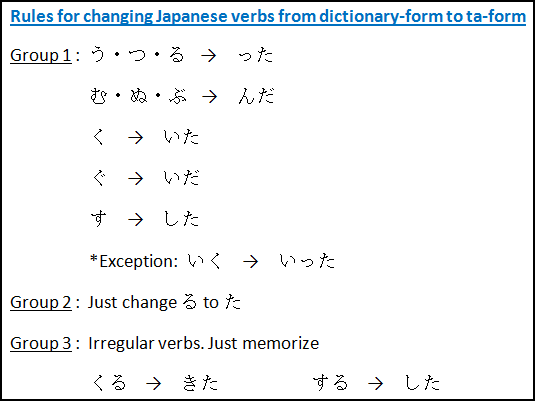


Japanese Past Tense In Plain Form Free Japanese Lessons


コメント
コメントを投稿